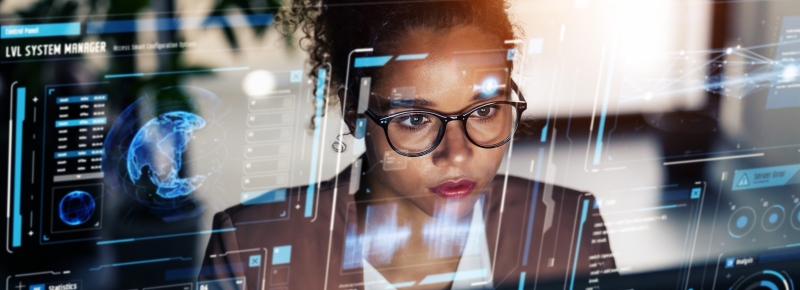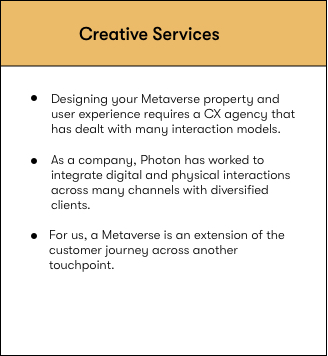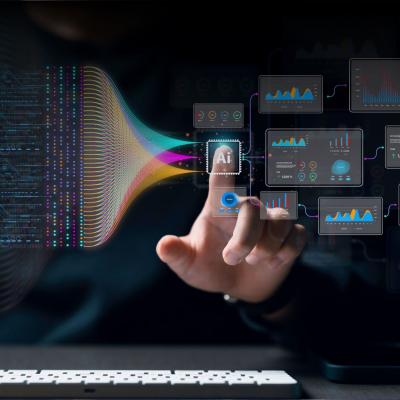Recap
In Part 1, we unpacked how three exponential forces — AI, Quantum, and Robotics — are no longer progressing in parallel, but actively converging to shape the next decade of innovation.
- AI is shifting from reactive tools to anticipatory copilots, scaling 1000× in capability through advances in memory, multimodal intelligence, and strategic reasoning.
- Quantum computing is emerging as a computational supercharger, unlocking solutions to problems traditional systems can’t even frame — from molecular simulation to encrypted systems and dynamic logistics.
- Robotics is evolving into the physical embodiment of intelligence — moving beyond automation into real-time autonomy across retail, healthcare, and manufacturing.
Intro
Most people still think of AI as reactive — you ask, it answers; you prompt, it generates. That was yesterday. Today, we’re entering a new era where AI doesn’t just predict — it anticipates. It transforms raw data into strategic intuition, operating not just as a tool, but as a forward-looking partner in decision-making. This shift moves AI from execution to foresight — from following commands to proactively shaping outcomes. It’s not just smarter; it’s situationally aware, goal-aligned, and constantly learning.
1. The Shift: From Completion to Cognition

Multimodal reasoning is the keystone: AI that sees, reads, and listens not just text, but charts, images, videos, and voice and synthesizes insights like a strategist, not a search engine.
- Then: Predict-the-next-word models and rigid flows
- Now: Systems that maintain context, process multiple modes, and learn in real time
- Next: AI that grasps your goals, charts a path, and self-corrects mid-course
2. Anticipation as Intelligence

True intelligence moves upstream. The best AI will proactively support you:
- Drafting a deck: “I pulled the latest metrics.”
- Planning travel: “I optimized for your priorities.”
- Managing your team: “I’ve redistributed tasks to hit the deadline.”
3. The Enablers Behind the Shift

- Memory that sticks: Long-context models retain goals across sessions
- Agent orchestration: Specialized AIs collaborate and delegate
- Tool use: AI that browses, queries, and triggers APIs
- Feedback loops: Learning from outcomes, not just pretraining
4. Practical Examples: Already in the Wild

- Workspace copilots suggesting next steps
- Dev tools writing tests, debugging, scaffolding
- Autonomous agents planning and executing workflows
- CX bots predicting customer intent before interaction
5. Timing: How Fast Is This Moving?

AI capability is doubling every 6–9 months:
- 60 seconds today → 1 second by 2026
- Fragile workflows today → seamless by 2027
- Junior analysts work today → executive assistant-level by 2028
Now / Next / Later: Anticipatory AI Trajectory
| Phase | Description | Enablers |
|---|---|---|
| Now | Reactive assistants with limited context | Short-context models, simple agents |
| Next | Context-rich systems anticipating needs | Long-context architectures, specialized agents |
| Later | Full strategic intuition and autonomous execution | Advanced memory, orchestration, continuous learning |
6. Why This Matters Strategically

- Play offense: Rewire decision loops for speed
- Prototype fast: Run micro-tests to find lift
- Build AI muscle: Learn in public, iterate quickly
- Compress cycles: Move from insight to execution faster than competitors
- Free people: Delegate grunt work; focus on the strategic why
Closing Thought
"Prediction was impressive. Intuition changes the game."
Anticipatory AI doesn’t wait for input — it understands context, adapts in real time, and acts with purpose. This is the leap from assistance to alignment — where machines don’t just support strategy, they become part of it.
What’s Next?
In our next post, we’ll explore how to invest in the right multipliers, where to place your bets before the exponential wave becomes obvious.










